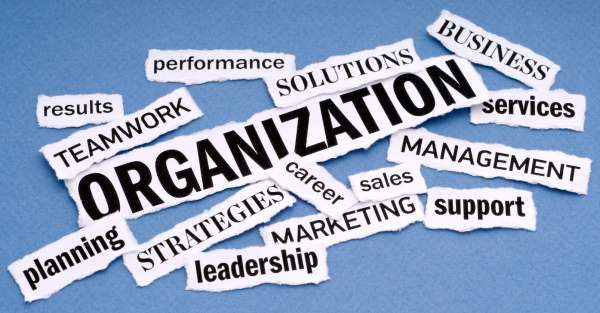Essential features of sound organization
According to L.A. Allen, sound organization can contribute greatly to the continuity and success of an enterprise in the following ways:

1. Facilitates Administration: If the plan of the organization is not designed properly then management will be rendered difficult and ineffective. Poor organization leads to waste motion and expensive overlap in work. Important work may be subordinated or may be overlooked totally. Sound organization allows management in effective flow of resources to overall objectives. It provides necessary platform for the management in effective planning, direction and controlling activities smoothly.
2. Facilitates Growth and Diversification: Sound organization allows business expansion. Under the traditional functional organizations, growth and diversification are facilitated by clear segmentation of work and delegation of functional authority, etc. When an organization achieves a considerable amount of expansion, the functional type could be substituted by more flexible decentralized organization.
3. Stimulates Creativity: A sound organization stimulates creativity as it defines duties with clear line of authority and responsibility. If there is no sound organization, work is divided by force and aggressiveness which affects the morale of the employees seriously. Sound organizational structure facilitates managers to delegate routine and repetitive jobs to subordinates and concentrate on important issues where they can exploit their potential in a better manner.
4. Ensures Efficiency in Management: Organization lays a foundation for focusing managerial attention and actions on the achievement of enterprise’s objectives. The various managerial functions like, planning, direction and control will be meaningful only when these functions are undertaken within the framework of a well designed organization.
In a sound organization, assignment of responsibility among the subordinates will be meaningful only if proper and adequate authority is given to them in order to perform their functions, and if an arrangement exists whereby activities at various levels can be effectively coordinated and controlled.
Thus organization is an effective tool for achieving the objectives of an enterprise. However, it can do so only if it provides for scientific selection of employees, specialization among its employees, proper delegation of authority and responsibility, and effective coordination and control. It should also be flexible enough to be adapted to the requirements of any change in circumstances.
5. Provides for all-round Development: A well designed organization can achieve the necessary momentum and ability to overcome challenges imposed upon by external forces. If the basic organizational structure is designed properly, it can be adjusted reasonably to meet all the changes. But if it lacks the above qualities, it would show signs of disintegration as soon as any change is introduced in the structure and would produce confusion and conflict.
6. Facilitates Adoption of New Technology: An organization should adopt to new technologies in the rapidly advancing world. Changes are bound to occur in production, distribution process and man-power management.
An effective management will be prepared to face all the changes and demanding needs of production and distribution. It should also give due importance to man-power management, and be prepared to face any challenges boldly and intelligently.
Preparation to meet any environmental changes will require realignment and rescheduling of activities. Then only maximum benefit can be derived from the introduction of new techniques in any field of activity. For all these, a sufficiently flexible organizational structure is an absolute necessity.
7. Encourages Initiative Among the Staff: To continue to remain effective, it is necessary for an organization to encourage initiative among its staff. Then alone, it can discover talents and creativity among its employees.
To sum up, there should be well-defined policies and procedures to guide the employees in deciding matters. But within the limits of such policies and procedures, employees should be given freedom in taking decisions.
Provision of suitable opportunity to show initiative does not mean a freedom to do things in any manner. But at the same time, restrictions should not be so many that they force managers to behave like machines.

